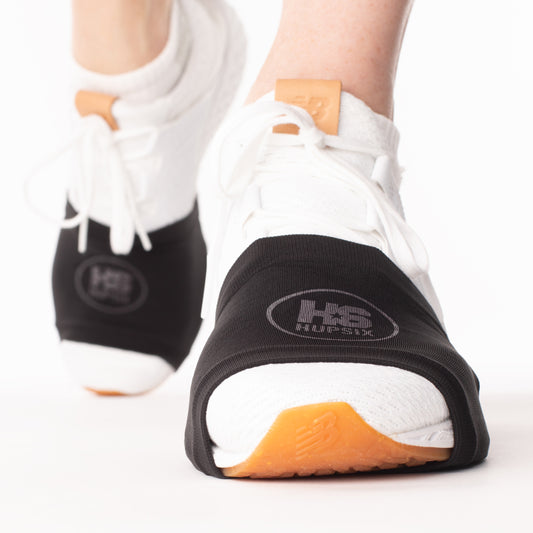
Is Walking Enough Exercise to Lose Weight?
If you’ve been walking every day and the scale hasn’t budged, you’re not alone. Walking feels like exercise — you’re moving, maybe you break a sweat, your watch tells you that you “closed your rings.” But here’s the hard truth: most walking isn’t enough to drive the changes that lead to meaningful weight loss or long-term fitness.
At HupSix, we’ve tested this with chest-strap heart rate monitors. And what the science says is clear: it’s not about steps, sweat, or calories — it’s about how much time your heart spends in the right zones.
Why Walking Alone Often Stalls Out
Walking can burn calories, but usually not enough to tip the balance if you’re looking for fat loss or fitness improvements. Here’s why:
- Steps don’t equal fitness. Ten thousand light steps can leave you in the “easy zone” all day. That doesn’t trigger fat-burning adaptations.
- Calories are just a guess. Trackers can be off by 20–30%. Even if they were right, calories burned don’t measure whether your heart is improving.
- Zones are what count. Moderate and vigorous heart rate minutes are the only proven markers of cardio fitness. That’s what the CDC and American Heart Association base their recommendations on.
Bottom line: You can walk for an hour, hit 10,000 steps, and still not get credit for cardio that changes your heart or metabolism.
Can Walking Be Enough for Weight Loss?
Yes — but only if it’s structured to push you out of “easy” and into true cardio zones.
- Casual walking: Good for movement, but rarely cardio.
- Brisk pace: Sometimes reaches moderate zone, but inconsistent.
- Intervals or hills: Your best shot at getting vigorous minutes.
If you want walking to count for weight loss and fitness, you need to turn it into a cardio workout. That means pacing, terrain, or intervals that make it challenging to talk while moving. Otherwise, you’re just logging motion, not training.
Why Cardio Matters More Than Calories
This is where most people get stuck. They chase calories and steps — but those numbers don’t tell the story.
- The “10,000 steps” rule? Born from a 1960s marketing campaign, not exercise science.
- Calories burned? They fluctuate wildly between devices and don’t prove fitness.
- Zone minutes? That’s the real scoreboard.
150 minutes a week in the moderate zone, or 75 in vigorous. Vigorous counts double — which means short, focused efforts can rack up results much faster than hours of walking.
The HupSix Difference
When we ran 30-minute HupSix classes with Garmin chest straps, the results were clear: 40–50 minutes of cardio zone time in just half an hour.
Compare that to walking: most walks barely register zone minutes at all — even an hour can come up short. That’s the difference between “moving” and “training.”
And here’s the kicker: it doesn’t feel brutal. The music sets the pace, the handles keep you engaged, and the rounds build progressively so you’re never just zoning out. It’s fun, but it’s also serious cardio.
Bottom Line
Walking is healthy movement. But if you’re walking for weight loss and wondering why results aren’t showing up, the answer is simple: most of the time, it doesn’t put you in the zones where change happens.
Cardio fitness isn’t about how far you went or how many calories you burned — it’s about how long your heart worked at the right intensity. That’s where fat loss, stamina, and real health gains live.
HupSix was built to deliver exactly that — structured, music-driven, at-home cardio that gets you in the zones every time. If walking hasn’t been enough, this is your next step.


